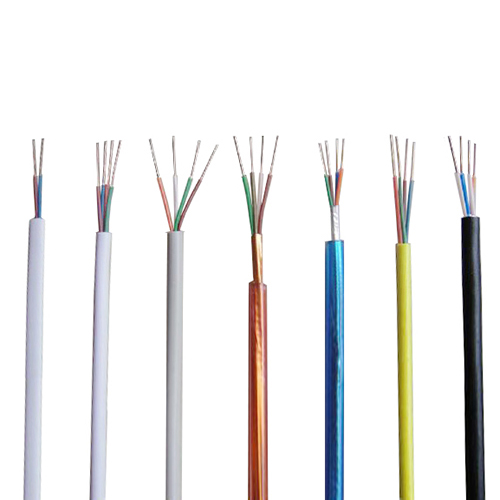Types of Telephone Cables
2024-07-10
A telephone cable, also known as a telecom cable or phone line, is a type of cable specifically designed for transmitting telephone signals between devices or from a service provider to a subscriber. Here are key points about telephone cables:
Types of Telephone Cables
1. Twisted Pair Cable:
- Unshielded Twisted Pair (UTP): Commonly used for telephone lines in homes and businesses. Consists of multiple insulated copper wires twisted together to reduce electromagnetic interference (EMI).
- Shielded Twisted Pair (STP): Provides additional shielding to protect against EMI, suitable for environments with high interference.
2. Coaxial Cable:
- Used for transmitting cable television (CATV) signals and high-speed internet alongside traditional telephone service.
- Contains a central copper conductor surrounded by insulation, a braided metallic shield, and an outer insulating layer.
3. Fiber Optic Cable:
- Uses optical fibers to transmit telephone signals as light pulses. Provides high bandwidth and is resistant to electromagnetic interference.
- Used for long-distance telephone lines and in areas where high-speed internet and digital telephony are required.
Components and Structure
1. Conductors:
- Made of copper or fiber optic strands, depending on the type of cable.
- Copper conductors carry electrical signals, while fiber optic cables transmit light signals.
2. Insulation:
- Surrounds each conductor to prevent signal interference and ensure reliable transmission.
3. Sheath or Jacket:
- Outer layer that protects the internal components from physical damage and environmental factors such as moisture and abrasion.
Applications
1. Residential Use:
- Connects telephones to wall jacks within homes or apartments.
- Typically UTP cables used for standard telephone lines.
2. Business and Office Environments:
- Used for PBX (Private Branch Exchange) systems and connecting office telephones.
- May include additional shielding (STP) to minimize interference in commercial settings.
3. Telecommunication Networks:
- Backbone cables that connect telephone exchanges, switching centers, and long-distance carriers.
- Includes high-capacity fiber optic cables for digital telephony and internet services.
Features and Considerations
1. Length and Gauge:
- Length varies depending on the application, from short cables within homes to long-distance cables spanning cities or countries.
- Gauge (thickness) of copper conductors affects signal quality and distance capabilities.
2. Connectors:
- RJ11 and RJ45 connectors are commonly used for standard telephone and Ethernet connections, respectively.
- Fiber optic cables use SC, LC, or ST connectors for higher-speed telecommunications.
Maintenance and Installation
1. Installation:
- Properly routed and secured to prevent damage and interference.
- Installation may require professional expertise, especially for fiber optic cables.
2. Maintenance:
- Regular inspection for physical damage and degradation.
- Testing for signal integrity and troubleshooting connectivity issues.
Telephone cables remain essential for traditional voice communications and are increasingly integrated with high-speed internet services in modern telecommunications networks. They vary in type and configuration based on application requirements, ensuring reliable and efficient communication.



